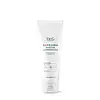What's inside
What's inside
 Key Ingredients
Key Ingredients

No key ingredients
 Benefits
Benefits

 Concerns
Concerns

 Ingredients Side-by-side
Ingredients Side-by-side

Water
Skin ConditioningSodium Cocoyl Isethionate
CleansingGlycerin
HumectantCoco-Betaine
CleansingGlyceryl Stearate
EmollientStearyl Alcohol
EmollientSodium Methyl Cocoyl Taurate
CleansingSodium Chloride
MaskingButylene Glycol
HumectantPotassium Cocoyl Glycinate
Coco-Glucoside
CleansingSalicylic Acid
MaskingCaprylyl Glycol
EmollientDisodium EDTA
1,2-Hexanediol
Skin ConditioningQuillaja Saponaria Bark Extract
CleansingGaultheria Procumbens Leaf Extract
PerfumingButyl Avocadate
Skin ConditioningBifida Ferment Lysate
Skin ConditioningLactobacillus
Skin ConditioningLeuconostoc/Radish Root Ferment Filtrate
AntimicrobialCentella Asiatica Extract
CleansingGlycine
BufferingSerine
MaskingGlutamic Acid
HumectantMadecassoside
AntioxidantSodium Hyaluronate
HumectantAspartic Acid
MaskingLeucine
Skin ConditioningAlanine
MaskingLysine
Skin ConditioningArginine
MaskingTyrosine
MaskingPhenylalanine
MaskingProline
Skin ConditioningThreonine
Valine
MaskingIsoleucine
Skin ConditioningHistidine
HumectantCysteine
AntioxidantMethionine
Skin ConditioningHydroxypropyltrimonium Hyaluronate
Ethylhexylglycerin
Skin ConditioningPropyl Gallate
AntioxidantHydrolyzed Hyaluronic Acid
HumectantSodium Acetylated Hyaluronate
HumectantAsiaticoside
AntioxidantAsiatic Acid
Skin ConditioningMadecassic Acid
Skin ConditioningHyaluronic Acid
HumectantOxygen
Skin ConditioningHydrolyzed Sodium Hyaluronate
Skin ConditioningSodium Hyaluronate Crosspolymer
HumectantPotassium Hyaluronate
Skin ConditioningWater, Sodium Cocoyl Isethionate, Glycerin, Coco-Betaine, Glyceryl Stearate, Stearyl Alcohol, Sodium Methyl Cocoyl Taurate, Sodium Chloride, Butylene Glycol, Potassium Cocoyl Glycinate, Coco-Glucoside, Salicylic Acid, Caprylyl Glycol, Disodium EDTA, 1,2-Hexanediol, Quillaja Saponaria Bark Extract, Gaultheria Procumbens Leaf Extract, Butyl Avocadate, Bifida Ferment Lysate, Lactobacillus, Leuconostoc/Radish Root Ferment Filtrate, Centella Asiatica Extract, Glycine, Serine, Glutamic Acid, Madecassoside, Sodium Hyaluronate, Aspartic Acid, Leucine, Alanine, Lysine, Arginine, Tyrosine, Phenylalanine, Proline, Threonine, Valine, Isoleucine, Histidine, Cysteine, Methionine, Hydroxypropyltrimonium Hyaluronate, Ethylhexylglycerin, Propyl Gallate, Hydrolyzed Hyaluronic Acid, Sodium Acetylated Hyaluronate, Asiaticoside, Asiatic Acid, Madecassic Acid, Hyaluronic Acid, Oxygen, Hydrolyzed Sodium Hyaluronate, Sodium Hyaluronate Crosspolymer, Potassium Hyaluronate
Water
Skin ConditioningStearic Acid
CleansingGlycerin
HumectantLauric Acid
CleansingPotassium Hydroxide
BufferingMyristic Acid
CleansingGlyceryl Stearate
EmollientPEG-100 Stearate
Propylene Glycol
HumectantCocamidopropyl Betaine
CleansingBeeswax
Emulsion StabilisingSodium Chloride
MaskingPolysorbate 20
EmulsifyingDisodium EDTA
Hydroxyethylcellulose
Emulsion StabilisingButylene Glycol
HumectantOryza Sativa Bran Extract
Skin ConditioningCarica Papaya Fruit Extract
Skin ConditioningAlthaea Rosea Flower Extract
Skin ConditioningAloe Barbadensis Leaf Extract
EmollientCitrus Grandis Peel Extract
AstringentGinkgo Biloba Leaf Extract
Skin ConditioningCitrus Limon Fruit Extract
MaskingSodium PCA
HumectantPhenoxyethanol
PreservativeEthylhexylglycerin
Skin ConditioningParfum
MaskingWater, Stearic Acid, Glycerin, Lauric Acid, Potassium Hydroxide, Myristic Acid, Glyceryl Stearate, PEG-100 Stearate, Propylene Glycol, Cocamidopropyl Betaine, Beeswax, Sodium Chloride, Polysorbate 20, Disodium EDTA, Hydroxyethylcellulose, Butylene Glycol, Oryza Sativa Bran Extract, Carica Papaya Fruit Extract, Althaea Rosea Flower Extract, Aloe Barbadensis Leaf Extract, Citrus Grandis Peel Extract, Ginkgo Biloba Leaf Extract, Citrus Limon Fruit Extract, Sodium PCA, Phenoxyethanol, Ethylhexylglycerin, Parfum
Ingredients Explained
These ingredients are found in both products.
Ingredients higher up in an ingredient list are typically present in a larger amount.
Butylene Glycol (or BG) is used within cosmetic products for a few different reasons:
Overall, Butylene Glycol is a safe and well-rounded ingredient that works well with other ingredients.
Though this ingredient works well with most skin types, some people with sensitive skin may experience a reaction such as allergic rashes, closed comedones, or itchiness.
Learn more about Butylene GlycolDisodium EDTA plays a role in making products more stable by aiding other preservatives.
It is a chelating agent, meaning it neutralizes metal ions that may be found in a product.
Disodium EDTA is a salt of edetic acid and is found to be safe in cosmetic ingredients.
Learn more about Disodium EDTAEthylhexylglycerin (we can't pronounce this either) is commonly used as a preservative and skin softener. It is derived from glyceryl.
You might see Ethylhexylglycerin often paired with other preservatives such as phenoxyethanol. Ethylhexylglycerin has been found to increase the effectiveness of these other preservatives.
Glycerin is already naturally found in your skin. It helps moisturize and protect your skin.
A study from 2016 found glycerin to be more effective as a humectant than AHAs and hyaluronic acid.
As a humectant, it helps the skin stay hydrated by pulling moisture to your skin. The low molecular weight of glycerin allows it to pull moisture into the deeper layers of your skin.
Hydrated skin improves your skin barrier; Your skin barrier helps protect against irritants and bacteria.
Glycerin has also been found to have antimicrobial and antiviral properties. Due to these properties, glycerin is often used in wound and burn treatments.
In cosmetics, glycerin is usually derived from plants such as soybean or palm. However, it can also be sourced from animals, such as tallow or animal fat.
This ingredient is organic, colorless, odorless, and non-toxic.
Glycerin is the name for this ingredient in American English. British English uses Glycerol/Glycerine.
Learn more about GlycerinGlyceryl Stearate is a mix of glycerin and stearic acid.
It is used to stabilize the mixing of water and oil ingredients. By preventing these ingredients from separating, it can help elongate shelf life. It can also help thicken the product's texture.
As an emollient, it helps soften skin and supports barrier-replenishing ingredients.
In cosmetics, Glyceryl Stearate is often made from vegetable oils or synthetically produced.
This ingredient may not be fungal-acne safe
Fun fact: The human body also creates Glyceryl Stearate naturally.
Learn more about Glyceryl StearateChances are, you eat sodium chloride every day. Sodium Chloride is also known as table salt.
This ingredient has many purposes in skincare: thickener, emulsifier, and exfoliator.
You'll most likely find this ingredient in cleansers where it is used to create a gel-like texture. As an emulsifier, it also prevents ingredients from separating.
There is much debate on whether this ingredient is comedogenic. The short answer - comedogenic ratings don't tell the whole story. Learn more about comegodenic ratings here.
The concensus about this ingredient causing acne seems to be divided. Research is needed to understand if this ingredient does cause acne.
Scrubs may use salt as the primary exfoliating ingredient.
Learn more about Sodium ChlorideWater. It's the most common cosmetic ingredient of all. You'll usually see it at the top of ingredient lists, meaning that it makes up the largest part of the product.
So why is it so popular? Water most often acts as a solvent - this means that it helps dissolve other ingredients into the formulation.
You'll also recognize water as that liquid we all need to stay alive. If you see this, drink a glass of water. Stay hydrated!
Learn more about Water